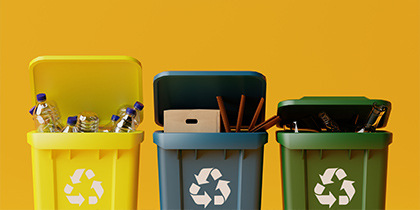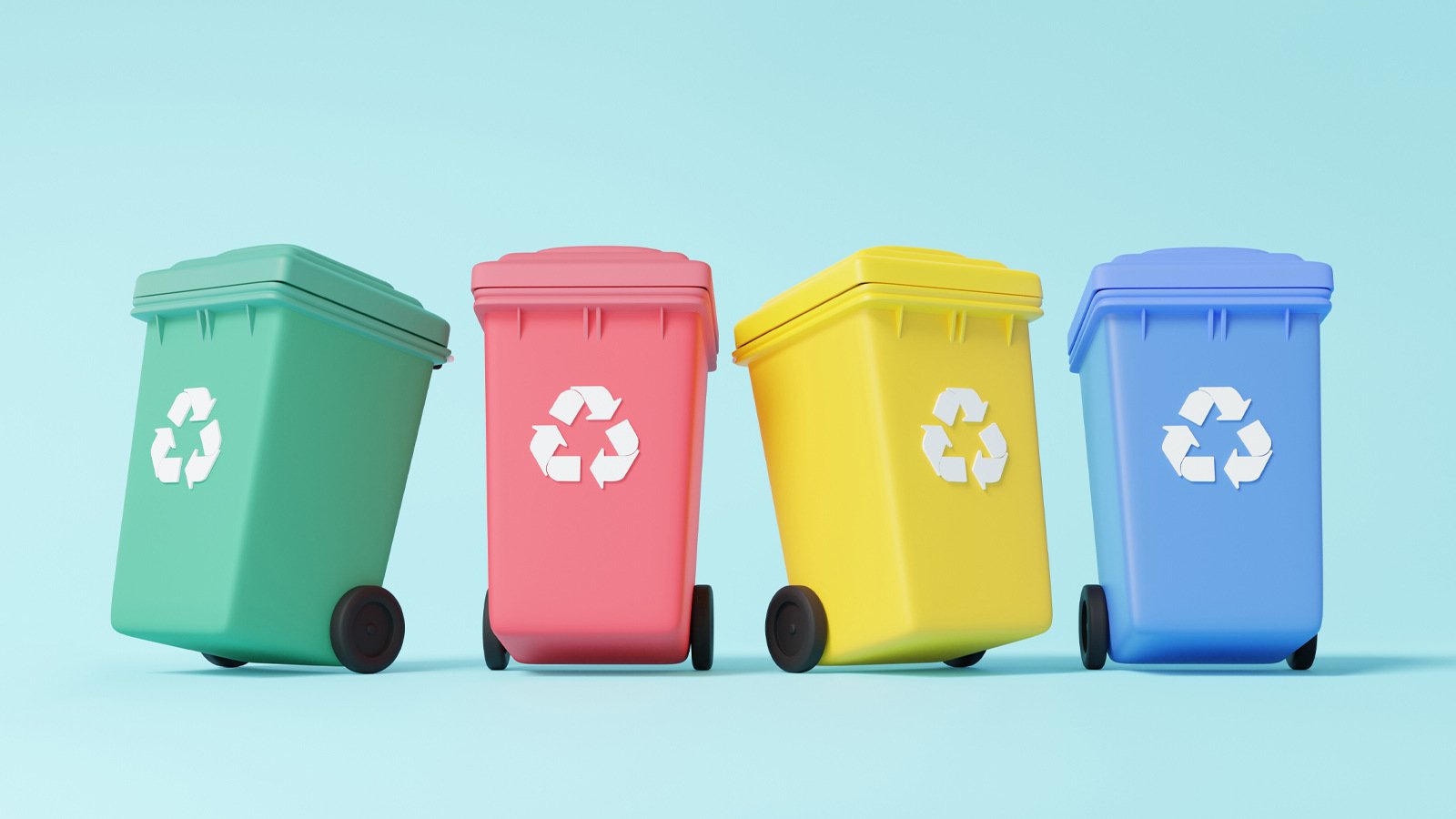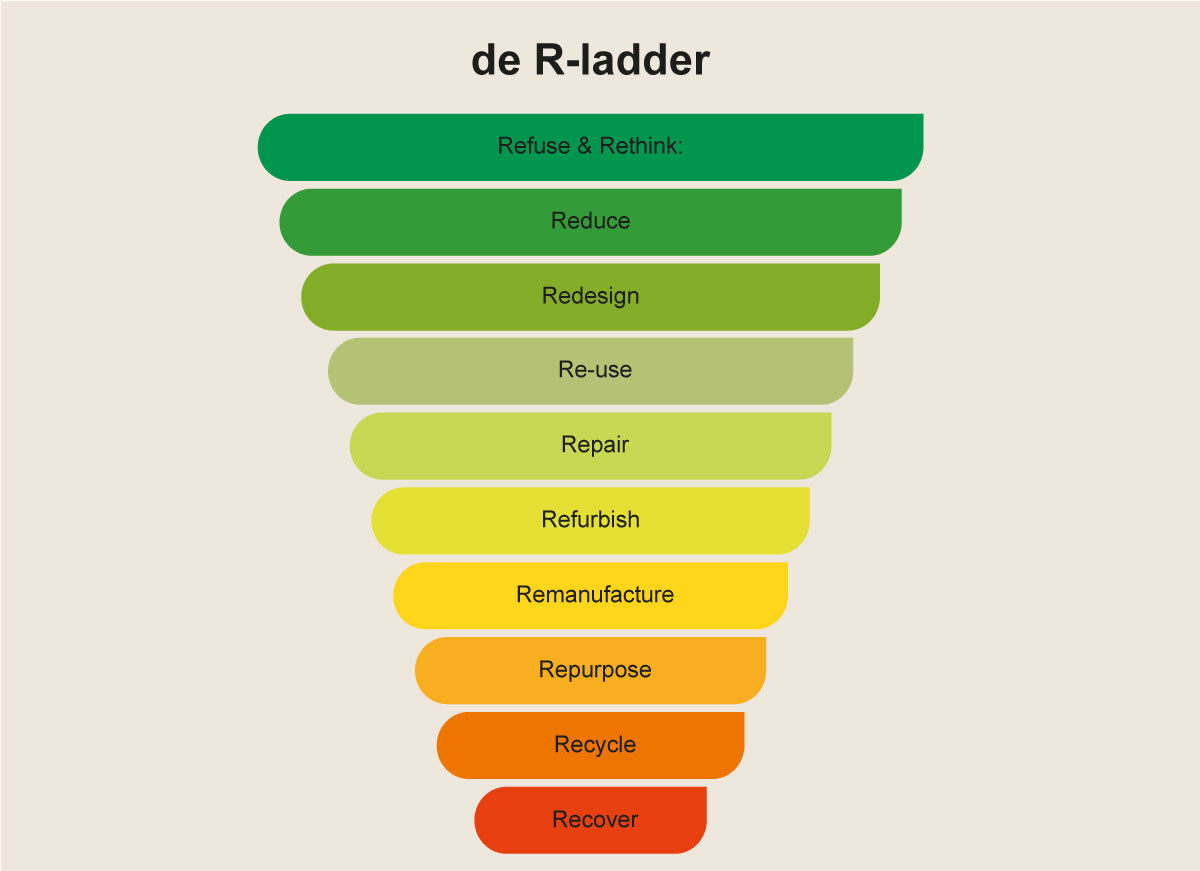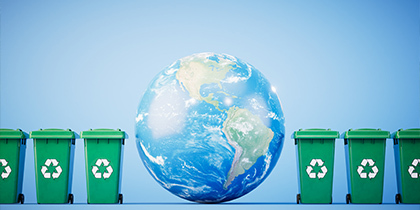Half of Dutch companies (49%) expect resource scarcity to result in higher prices for both products and services. They anticipate having to pass some of this cost increase on to their end customers. Nineteen percent of companies are even so dependent on these raw materials that they see the current raw material scarcity as a concrete business risk. Therefore, it is more important than ever to use our raw materials sparingly.
Recycling and upcycling are two ways to extract more value from waste streams and reduce dependence on new raw materials. But what exactly is the difference between these two methods, and what benefits do they bring to your organization? You can read about it in this blog.
What is recycling?
Recycling is the process of processing waste streams into new raw materials so that they can be reused. This starts with waste separation: materials such as paper, glass and plastic are collected separately. Glass is often already separated by consumers by color, after which sorting plants refine this further and sort other materials, such as plastic, by type. The sorted materials are then cleaned and reduced in recycling plants (e.g., shredded or melted) and processed into raw materials. For example, old paper is dissolved into pulp - the basis for new paper and cardboard - and glass jars are melted down into liquid glass for new bottles. These recycled materials are used again to produce new products.
What are the advantages and disadvantages of recycling?
A major advantage of recycling is that producing new products from recycled materials often requires less energy than using new raw materials. For example, recycling aluminum cans saves 95% energy compared to producing aluminum from bauxite, the main raw material for aluminum. This energy savings results in fewer CO2 emissions because much of the energy is generated from fossil fuels.
By reducing materials to raw material levels, the demand for primary raw materials such as oil, metals and wood decreases. For example, thanks to recycling, less wood is needed to produce new paper. Yet recycling is not fully circular: materials often lose quality and cannot be reprocessed indefinitely, so new raw materials will always be needed in part.
What is upcycling?
Upcycling means processing waste directly into a new product, often with a higher value or quality than the original material. So the material is not first completely broken down to raw material level, as happens in recycling, but is given a second life immediately.
.jpg?width=346&height=346&name=LinkedIn%20(79).jpg)
A good example of this is NS Upcycle. We all know NS' yellow trains and blue seat covers. Every year, millions of people use this means of public transport: on average, around 1.1 million travel by train every day. It is logical that the trains, including their interiors, need to be replaced over time.
NS has given this a sustainable twist through NS Upcycle. Old NS material is given a second life as a functional product. For example, upholstery from train seats is reused as bags or even shoes, and yellow travel information boards are transformed into notebooks and trays.
What are the advantages and disadvantages of upcycling?
Upcycling can contribute to CO2 reduction because materials do not have to be processed to raw material level first, as in recycling. The upcycling process often requires less energy than traditional recycling or incineration, so overall emissions can be lower.
In addition, upcycling encourages innovation. It inspires companies to look differently at materials previously considered waste and give them new value. A great example of this is Rebottled, a company that turns wine bottles into lamps and glasses.
Still, there are limitations. The process of upcycling is often labor and time intensive. Consider, for example, the materials from NS trains: they are first carefully removed, cleaned and reworked. This, combined with the fact that the processes are less automated, often makes upcycling more expensive than traditional recycling.
Chemical recycling: a form of upcycling
One form of upcycling is chemical recycling. This involves using chemical processes to reduce plastics to their original raw material. Because the material is thus completely broken down and then reprocessed into high-quality plastic, the quality remains the same as that of new material. This makes chemical recycling a form of upcycling: the value of the material is fully restored.
A real-life example
Chemical recycling was used successfully at Aviko Proven, a leading player in the potato processing industry. The company faced the challenge of disposing of plastic films in a sustainable way. Traditional waste disposal led to incineration of the foils, which did not align with the organization's sustainability goals. Together with Milgro, an environmentally friendly solution was sought. The choice fell on chemical recycling.
Aviko Proven now disposes of foils an average of two to three times a month, accounting for some 11 to 12 tons per month. Thanks to this cooperation, the foils are sustainably recycled rather than incinerated. This has led to a significant reduction in environmental impact.
Stay informed
Want to stay up to date with the latest developments? Follow us on LinkedIn and Instagram or subscribe to our newsletter. Curious about what Milgro can do for your operations and waste process? Feel free to get in touch .


















